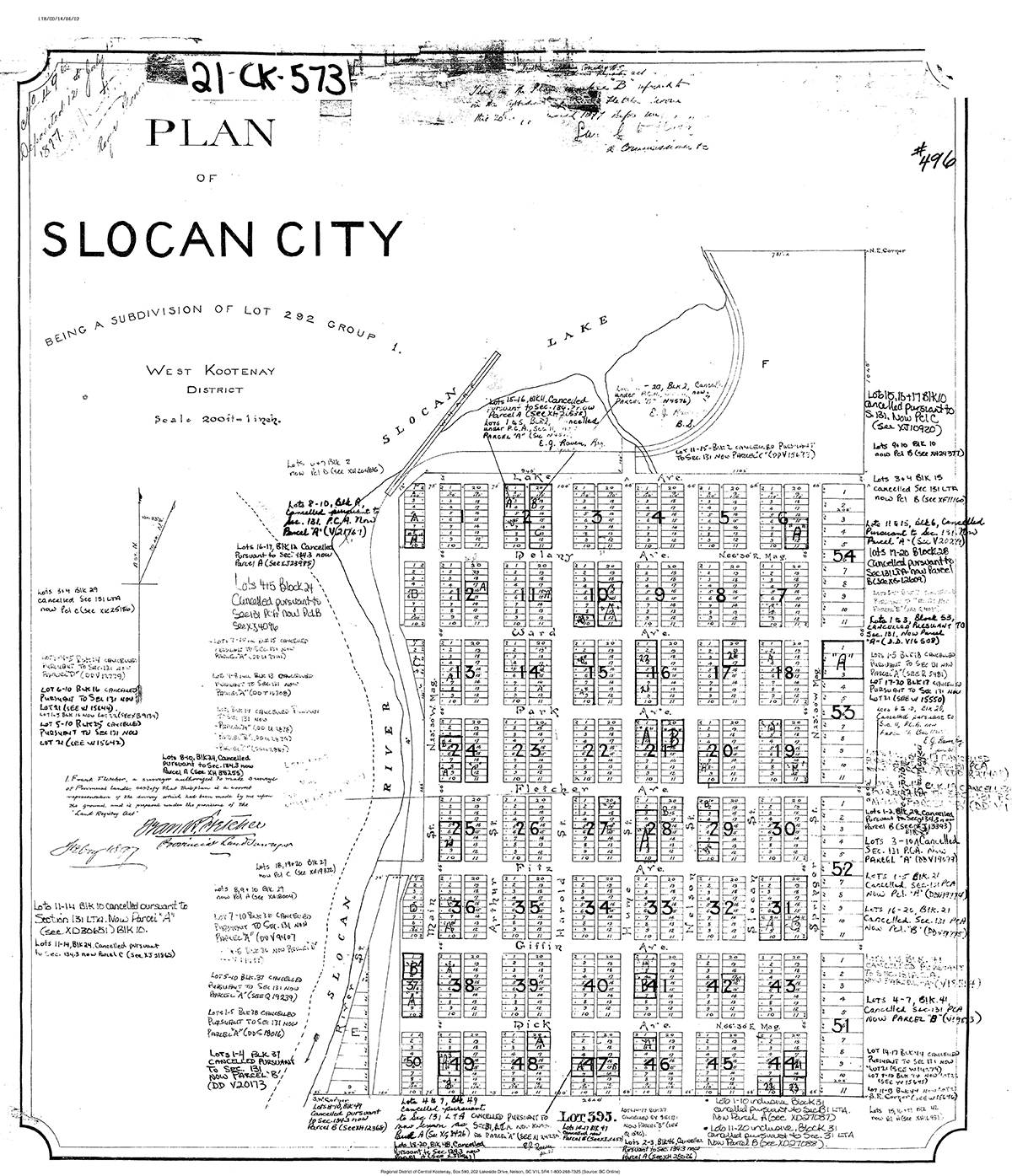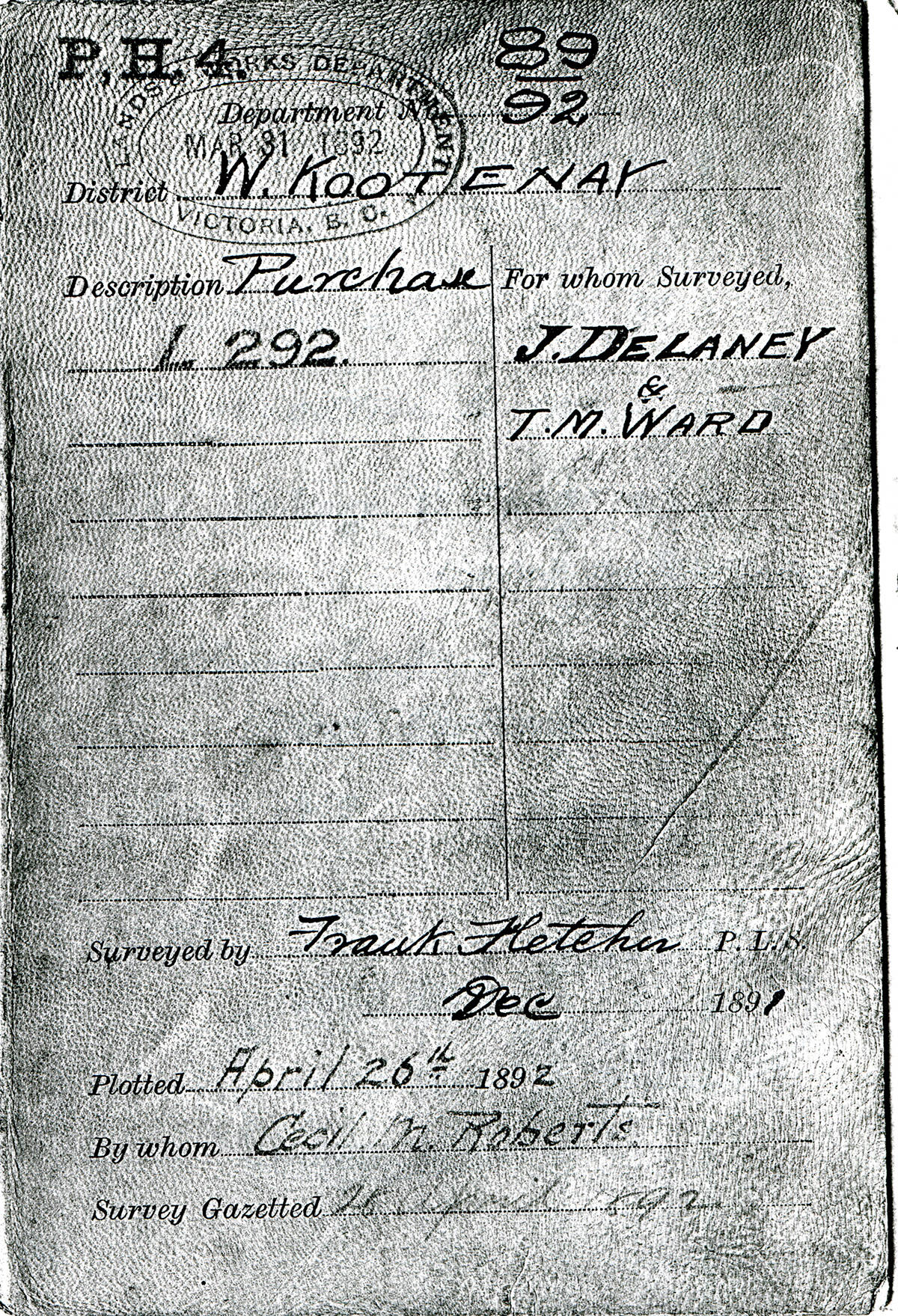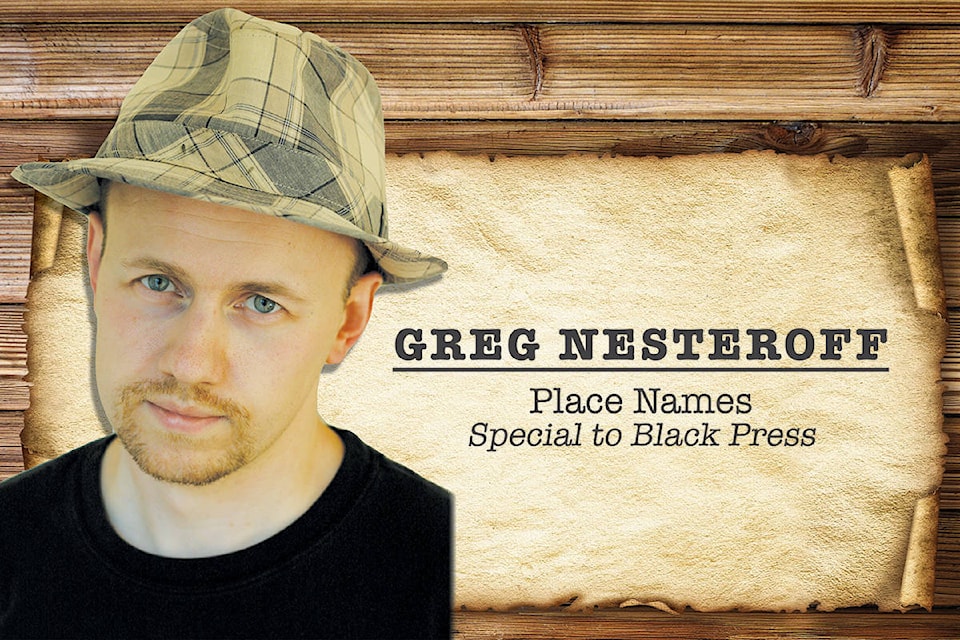A series on West Kootenay/Boundary place names
An earlier installment in this series looked at how Thrums, BC got its name from a series of novels by J.M. Barrie set in the fictional village of Thrums, Scotland, based on Barrie’s birthplace of Kirriemuir.
The books, Auld Licht Idylls, A Window in Thrums, and The Little Minister, predated Barrie’s fame as author of Peter Pan.
In a letter to the Nelson Daily News of Aug. 6, 1937, Robert Main wrote that a few miles from Kirriemuir was the town of Brechin, which “was the birthplace of one of Nelson’s most brilliant raconteurs, whose wit sparked as bright as the gems of a jeweller.” Main was talking about himself, of course — he published his verse in a series of booklets called the Pop Inn Annual — but he actually lived at Bonnington, also named after a place in Scotland.
Main went on: “When first I settled in the Kootenays it was at Thrums. When building my home I had an idea that I would like to have a copy of the original Window in Thrums in my cottage. I wrote to J.M. Barrie for details. I doing so I told him about the origin of the name Thrums, BC …
“The CPR directors were naming the stations and the daughter of one of them was reading A Window in Thrums at that point. Asking her father if she could name the station, and he complying, she named in Thrums.” Unfortunately, neither father nor daughter’s name was recorded.
But Main received a reply from Barrie dated Feb. 8, 1909 which read: “Thank you heartily for your very pleasant letter. I was interested to hear of Thrums, BC and also to be told the quaint story of its origin.
“Alas for the original Window. There is not and never was one. I laid my scene in a house that exists (tho’ I have never been inside it) and I put in the window as I wanted it to command the ‘brae.’ But if you like to think you put in the window in reality, from memory it should be about twice the size of this double sheet of paper, only you see good things and pleasant from it.”
What became of the original letter and did Main receive an inscribed copy of the book he desired? It’s not known.
RIONDEL
Our installment on Riondel noted that two poems were written about its pronunciation. Turns out there was a third, published in Gilbert West’s 1953 collection, Kootenay Kuts.
I always know the way to spell
The letters in R-I-O-N-D-E-L
But for the pronunciation,
That’s left to the imagination.
Some people say it’s “Reeondel”
And then there are some more, as well,
That claim that “Ryondel” is right;
It mightn’t be, but then it might.
But if you wish to seem au fait,
Just don’t pronounce it either way —
But make it Reeon-Ry- … Oh, H–l —
You know the place, the old Bluebell
The last two lines are similar to a verse attributed to Capt. West of Kaslo and published in Terry Turner’s book Bluebell Memories: “RI-ondel, Ri-ON-del, Rion-DEL/Oh hell/Just call it good old Bluebell.”
SLOCAN
CITY AND
WHITEWATER
A previous installment stated Slocan City was first mentioned by name in the Nelson Miner of Jan. 9, 1892. But an earlier reference — by three days — has since been discovered. The Spokane Review of Jan. 6 quoted Bruce White:
“Parties continue to go in almost daily by way of the Slocan river from Nelson, and there are now about 50 wintering on the lake. About 30 of these are at the mouth of Carpenter creek, and the rest are at the townsite at the south end of the lake, now being platted by Delaney and Ward. The survey is now almost completed.
“The Madden boys from Nelson are going to put in a halfway house between Whitewater station, where the Slocan trail leaves the Columbia & Kootenai [sic] railroad, and the south end of the lake, or Slocan City as it now beginning to be called.”
Two noteworthy things here. First, although this makes it sound like the Slocan City townsite, it must have just been District Lot 292. Survey notes for the latter indicate it was done by Frank Fletcher for James Delaney and Thomas Ward in December 1891 and plotted by Cecil M. Roberts on April 26, 1892. It was gazetted two days later.
Fletcher’s actual townsite plan was surveyed in February 1897 and deposited with the land registry on July 12, 1897. The plan number of 496, however, seems more consistent with an earlier survey date. Plan 495 is North Kaslo, deposited July 9, 1893.
Second, Slocan Crossing (present day Shoreacres) is referred to as Whitewater station, a name not seen before or after. But we know where it comes from: the Whitewater mining claim at the head of Rover Creek was staked by John Wallace in the summer of 1889.
That makes three places in West Kootenay known as Whitewater, however briefly.
Retallack, halfway between Kaslo and New Denver on Highway 31A, was formerly known as Whitewater. The name survives in Whitewater Creek, which flows into the Kaslo River, and Whitewater Mountain.
Whitewater, the ski resort on the west side of Ymir Mountain that opened in 1976, was officially adopted by the BC Geographical Names office in 2005 as a “recreation facility.”


